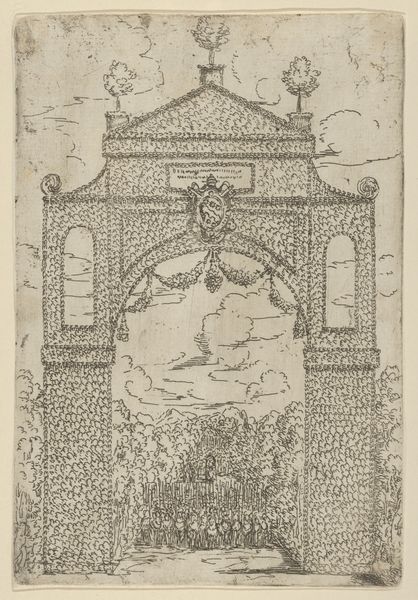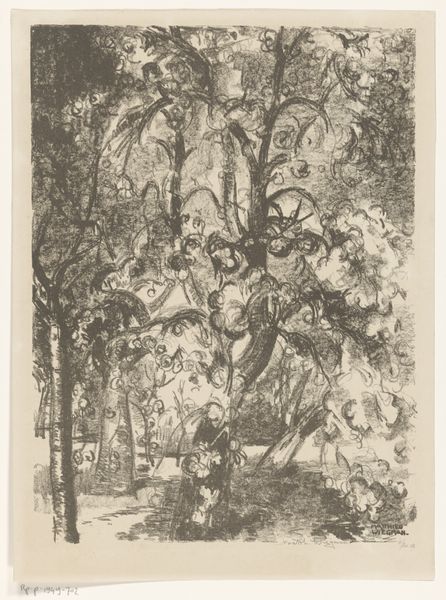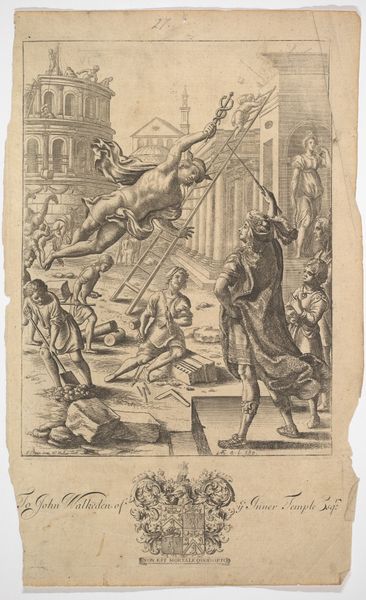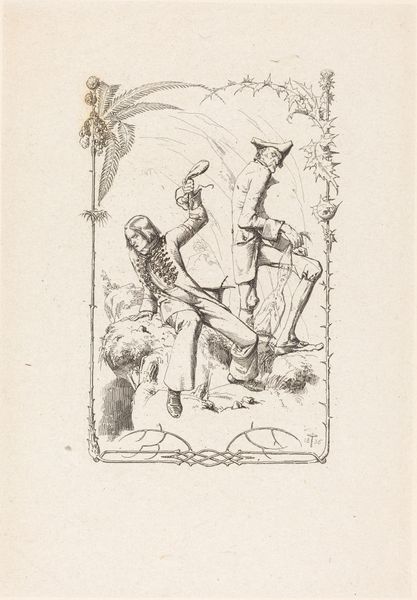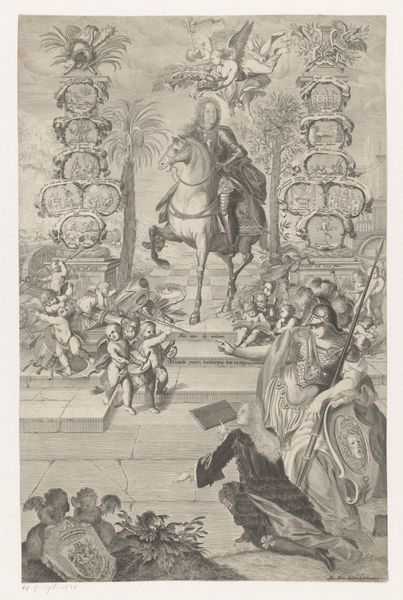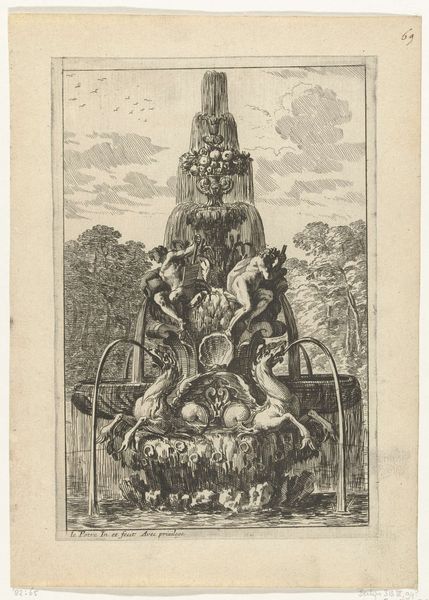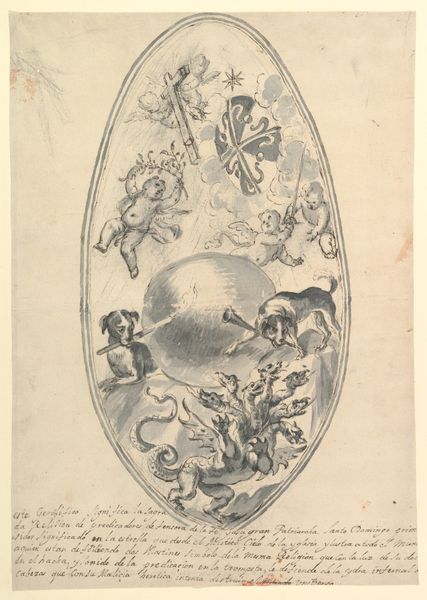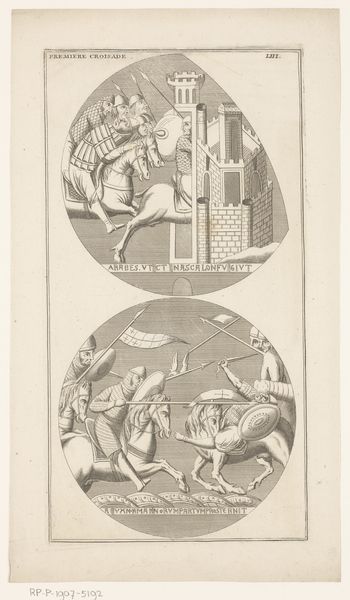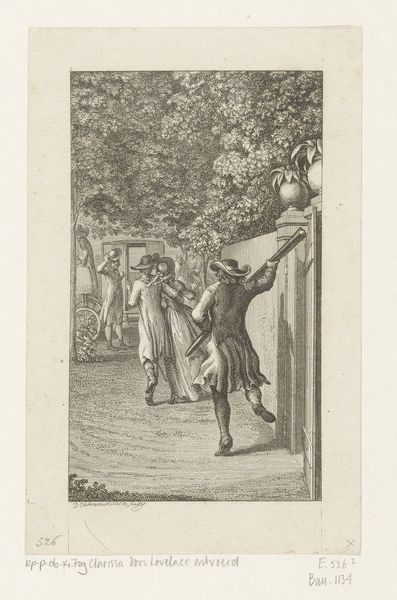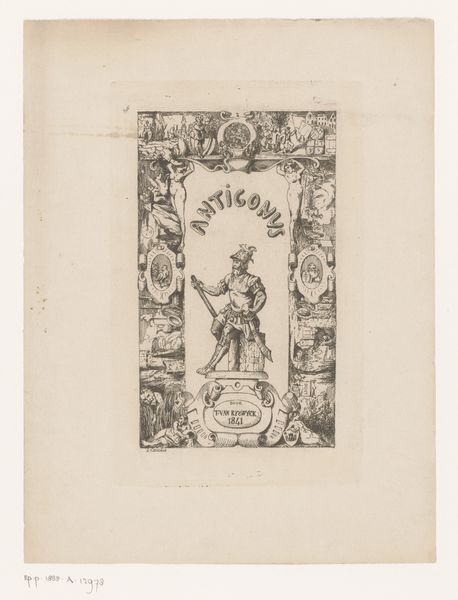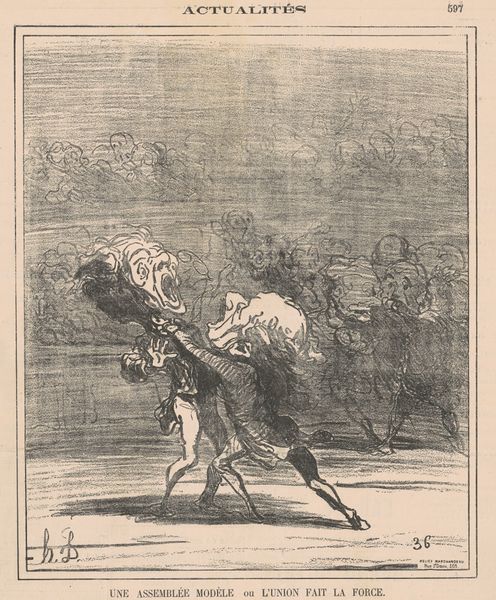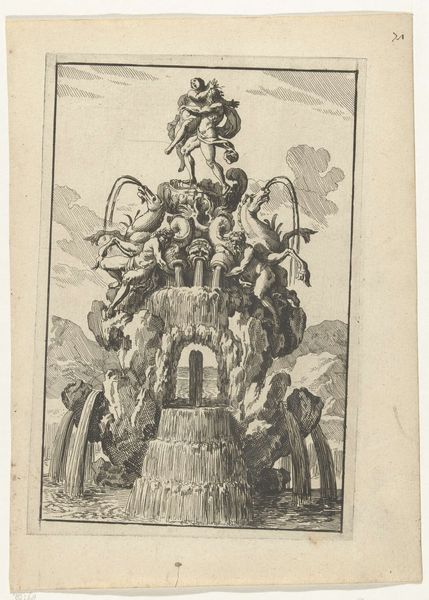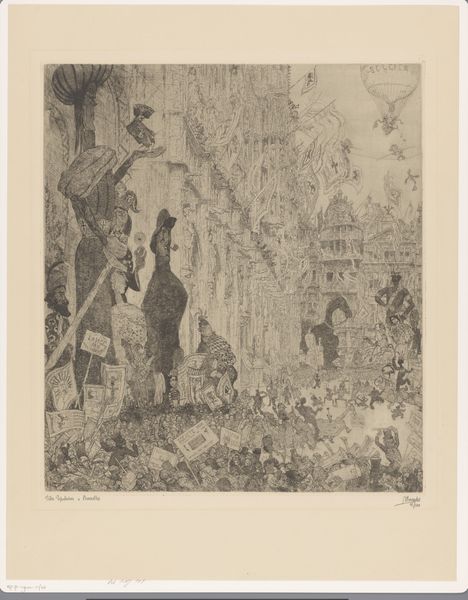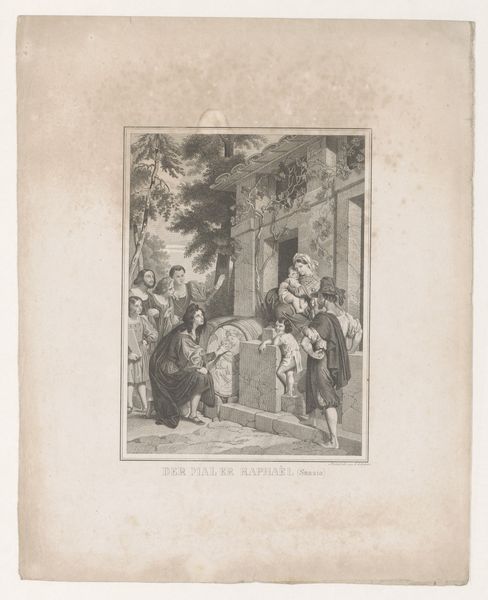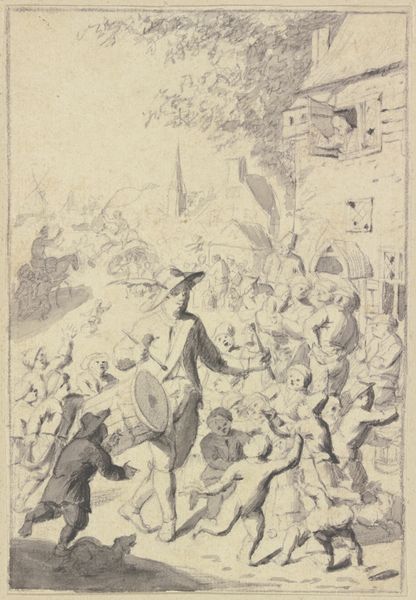
The firework display called 'Girandola' at the Castello Sant'Angelo in Rome, a nocturnal scene with fireworks issuing from the castle and a crowd of spectators in the foreground 1579
0:00
0:00
drawing, print, etching, ink, engraving
#
pen and ink
#
drawing
# print
#
etching
#
etching
#
perspective
#
11_renaissance
#
ink
#
cityscape
#
history-painting
#
italian-renaissance
#
engraving
Dimensions: sheet: 21 x 15 15/16 in. (53.3 x 40.5 cm) plate: 19 9/16 x 14 7/8 in. (49.7 x 37.8 cm)
Copyright: Public Domain
Editor: Here we have Giovanni Ambrogio Brambilla's 1579 etching, "The Firework Display Called 'Girandola' at the Castello Sant'Angelo in Rome." The sheer detail in this print, capturing the excitement of the spectacle and the sheer number of onlookers, is fascinating. What does this particular depiction of public festivity suggest to you? Curator: It is compelling how Brambilla's rendering draws attention to the material production of such spectacle. Consider the labor invested, from constructing the fireworks themselves, likely a highly specialized and dangerous task, to preparing the Castello as a stage. Then, the material consumption evident in the finished display itself, a transient explosion of light and sound that signifies power and wealth, only to vanish moments later. What social purpose did this planned obsolescence serve? Editor: I hadn't considered the labor aspect so directly. So, it’s less about the aesthetic achievement of the fireworks and more about… who made it possible, and what their involvement says about Roman society then? Curator: Exactly. Note the detail in the etching. Brambilla makes no attempt to hide the mechanisms, the scaffolds that supported the explosions. Look at how the crowds below are depicted: numerous, yet relatively uniform, as though consuming a product manufactured for them. It raises interesting questions about the intended audience and their role in perpetuating this power dynamic. Think of it as a visual document of consumption, orchestrated by the elite, dependent on many artisans. What would this image signify to someone outside of the city or even the country? Editor: So, the print itself, as a reproducible image, also democratizes or at least disseminates, this elite spectacle. Curator: Precisely. This allows a much broader audience to ‘consume’ the event. This connects the ephemeral fireworks display with tangible cultural production. This allows an analysis of the materials, techniques, and, crucially, the social hierarchies intertwined in the making of both the event and its artistic representation. Editor: That's a powerful reframing. Seeing the spectacle as just the final step in a complex production chain gives a much clearer perspective of societal consumption during the Renaissance. Thank you. Curator: It highlights that the value of such an image lies not only in its aesthetic qualities but also its inherent ability to expose systems of power.
Comments
No comments
Be the first to comment and join the conversation on the ultimate creative platform.
